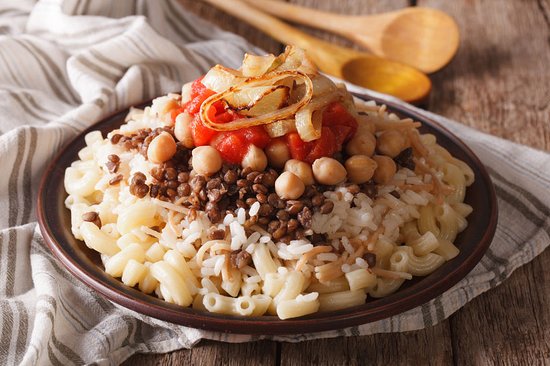African Food
How to Make Egyptian Koshari
How to Prepare Egyptian Koshari
Contents
When we talk about spicy African dishes, Koshari will take a comfortable spot among the top 10. This Egyptian delicacy has become so popular across the world because tourists who eat it when they visit Egypt go-ahead to relive their memories and share them with friends and family, who in turn can’t wait to try it out.
Even though it is a national dish, it does not originate from Egypt. Koshari originated from India, and the name ” Koshari ” is Hindu, which is used to refer to a dish of lentils and rice. It was brought into Egypt by the British in the late 1880’s when they arrived in Egypt from India. Due to how fast it is to prepare and how filling it can be, the Egyptians accepted it. Egyptian street vendors seem to be at the top of the distribution chain as people are regularly seen standing in long queues waiting to get a plate, on the streets of Egypt.
Kushari (also spelled Koshary or Koshari) is made from slightly funny combinations. Koshari is a mixture of lentils, macaroni noodles, and rice in a bowl and topped with a spicy tomato sauce that is prepared with a unique Middle Eastern spice blend of garbanzo beans, and fried onions. The Middle Eastern spice can be quite challenging to find. However, you can use a substitute or an alternative, and I’m sure it would come out just fine.
In my view, the only downside to preparing this national dish is, you are going to need lots of containers and several uncommon ingredients. I suggest you get enough saucepans ready.
To prepare Kushari, you need:
INGREDIENTS
- 2 tablespoons of olive oil
- 1 cup medium-grain rice
- 1 cup brown lentils
- 2 cups small macaroni
- 2 cups vegetable stock
- 1 garlic clove, quartered
- 1 tablespoon ground cumin
- 1 bay leaf
- ½ tablespoon salt
FOR THE SAUCE:
- 2 tablespoon olive oil
- 1 small onion, diced finely
- 2 cloves garlic, finely minced
- 1 (15 oz) can unseasoned tomato sauce (cooked/pureed tomatoes)
- ¼ teaspoon red chili flakes (omit if you dislike spicy hot)
- 1 tablespoon wine/vinegar
- 1 teaspoon of Salt
- 1 teaspoon of pepper
- Crispy Onion Garnish:
- 2 large onions, finely sliced
- Oil for deep-frying
- 1 (15 oz.) canned garbanzo beans
METHOD OF PREPARATION
- Add 2 tablespoons of olive oil in a medium saucepan over medium heat. Add the rice and fry it for 2 minutes, then add the vegetable stock. Reduce the heat, cover, and allow to simmer for 15minutes or until the rice is well cooked.
- Rinse the lentils with water and add them to another saucepan (preferably a medium-sized saucepan) with 2 cups of water. Add the ground cumin, bay leaf, and garlic and bring the mixture to boil. Keep the heat low, cover, and allow to simmer for 20-30 minutes till the lentils are tender. Once cooked, add a little salt and stir properly. Strain the excess liquid if there is. Most Egyptians prefer it quite soupy.
- For the macaroni, you can cook it following the instruction on the package or to your preference till it is soft. You might want to cook it till it is a bit more tender than usual.
Preparing the Sauce
- Add a tablespoon of oil in a medium saucepan over medium heat and add the onion. Cook until it is soft for about 5 minutes. Add the garlic to the saucepan and sauté until it is golden brown. Add the tomato sauce, chili flakes, wine vinegar, salt, and some pepper to your taste. Allow the mixture to simmer. At really low heat, cover, then allow to simmer for 15-20 minutes while you stir the mixture periodically.
- To make the crispy onions used to garnish, heat the oil in a skillet and add the onions. Fry the onions until it becomes dark brown (close to the color of dark caramel). Use a slotted spoon to remove the onions from the oil and place them on a paper towel to drain the oil and cool.
- Dish the desired amount of rice, lentils, and macaroni unto a serving plate, add some of the spicy tomato sauce. Top off with garbanzo beans and crispy onions.
Enjoy your spicy homemade Koshari with freshly squeezed orange juice.

